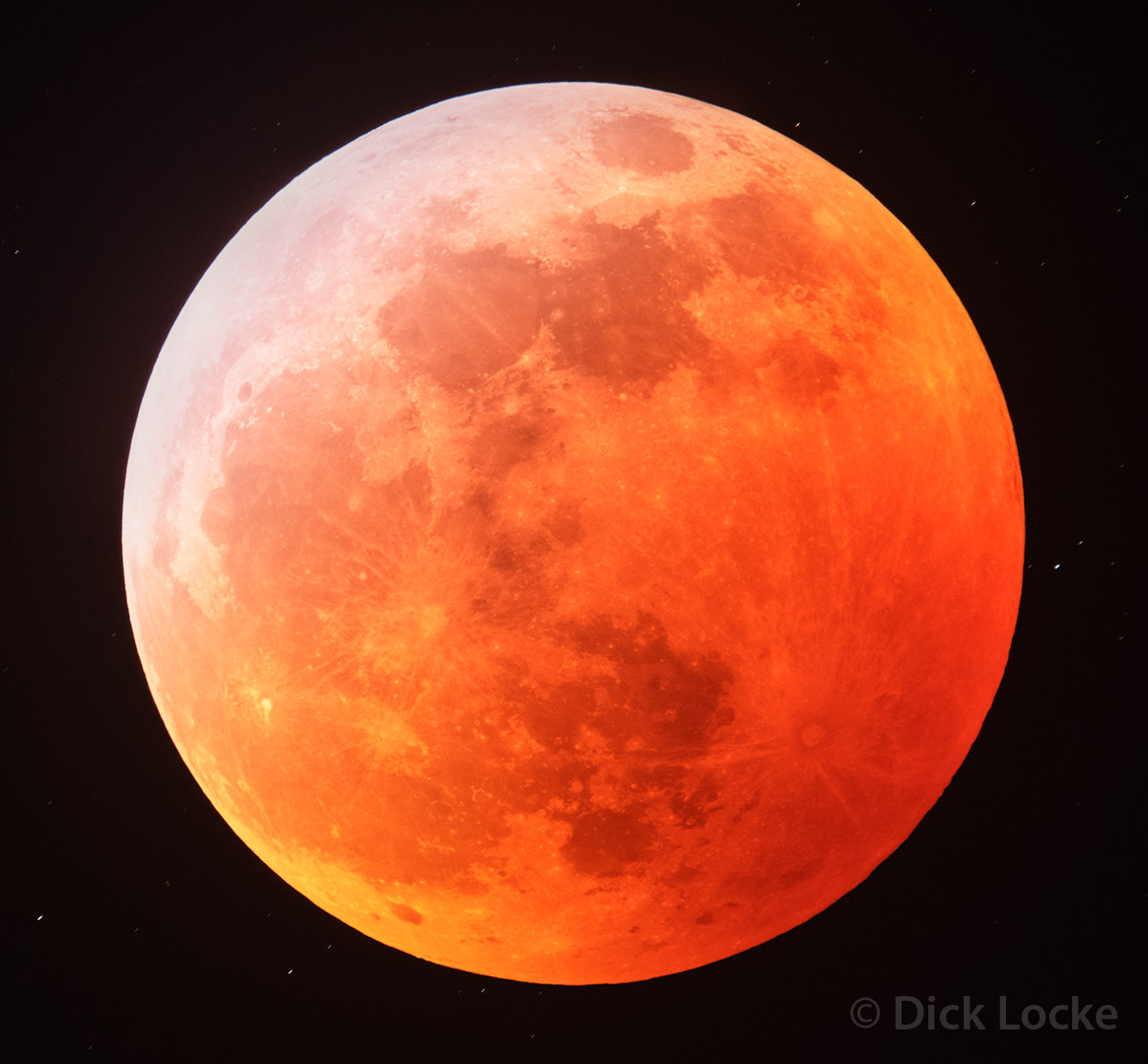
Total Lunar Eclipse - January 20, 2019

This (above) is a 20 second exposure, one of the longest I tried. You can see some stars, quite a few actually,
The above magazine hit the newsstand 2/13/2007. The credit on the contents page reads: "ON THE COVER: A sequence of three Moons highlights the unusual yet breathtaking views seen during a total lunar eclipse. Photos by Dick Locke." Click on the magazine for a larger image.

Above is from 2004. Starting from the lower left is the early part of the eclipse, progressing along until totality, center, and than coming out of totality (bright part on left). See below for camera/telescope details. All the above images straight out of the camera; only mods were resizing and slight sharpening as a final step.
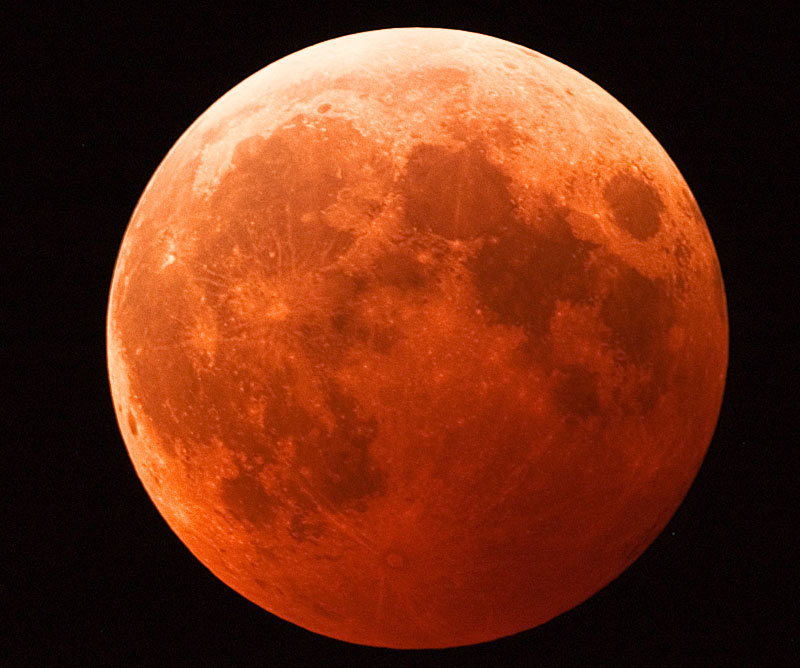
Lunar Eclipse, October 27, 2004 -- Nikon D100 camera, Takahashi TOA 130 telescope, prime focus with Nikon Nikon TC-14 1.4x teleconverter. 8 seconds exposure, ISO 400, Cloudy -3 setting, with minimal color changes in Photoshop.
 This is a version with less color but showing more detail in the bright area. 8 seconds at ISO 200 setting.
This is a version with less color but showing more detail in the bright area. 8 seconds at ISO 200 setting.
Below: Lunar Eclipse, January 20, 2000 -- Fuji 100 print film, prime focus, Takahashi FS 102 telescope with 2X tele-extender at f16 - Below.
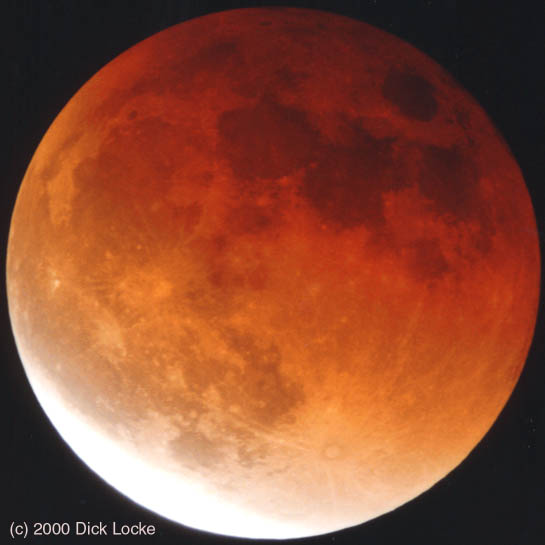
| Above: Near-totality, 16 second exposure | |
| Short exposure of bright half during eclipse, about 1/60 sec. | |
| Exposure showing dark half during eclipse, about 2 sec. |
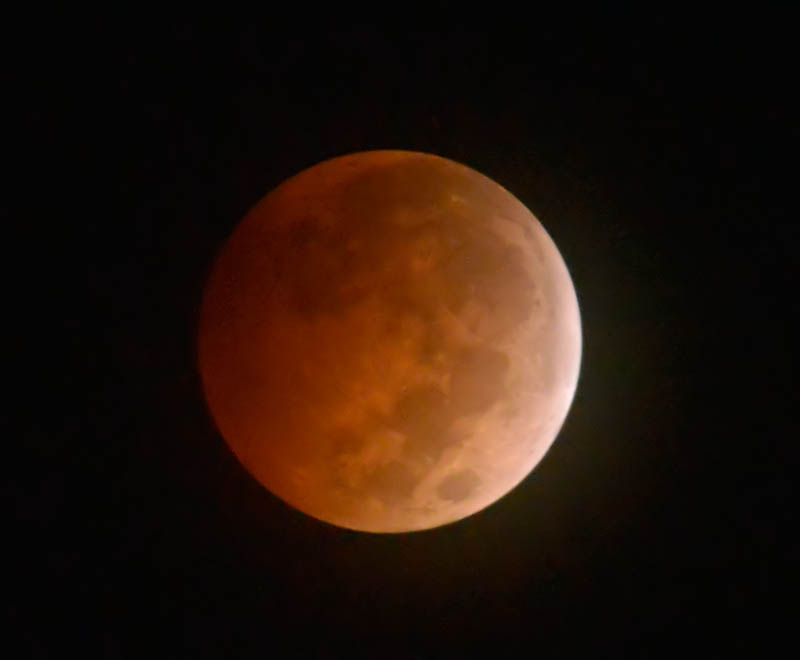
This was a quick driveway shot before heading to work. Nikon D610 camera, 300mm f2.8 lens with 1.7x, tripod mounted., 1/13s at ISO 6400. Not as sharp as the telescope shots as you can see. The color is pretty much straight out of the camera.

Early phase of the eclipse, the earth's shadow is taking a bite out of the moon.
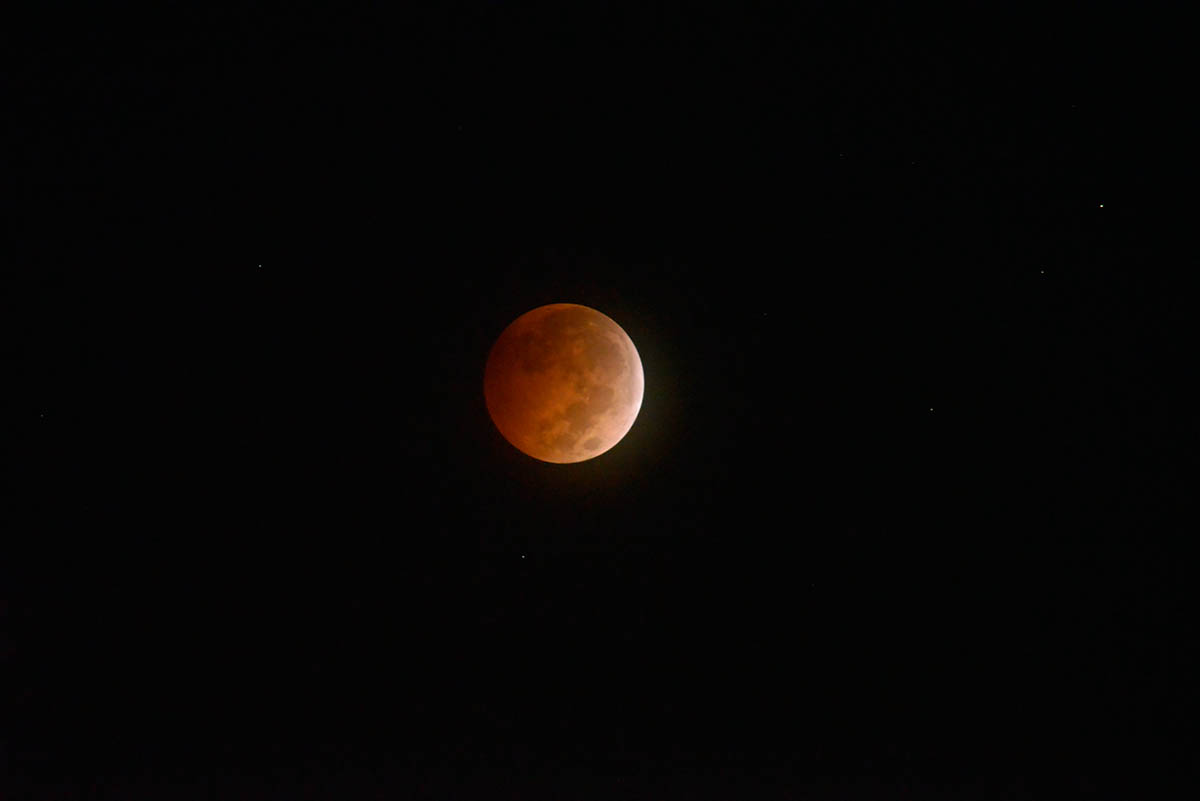
Here's a complete camera frame. The planet Uranus is the slightly bluish dot on the upper left. I set a black level on the sky, otherwise the color is straight out of the camera.

Copyright ©
by Dick Locke. All Rights Reserved.
Contact and Image Use Information